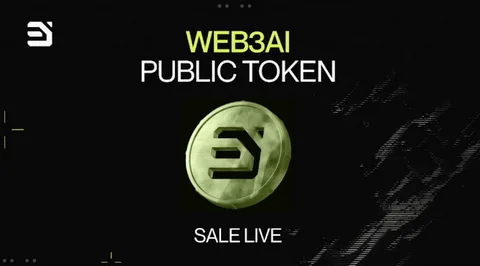Introduction
The SPX surge is more than just a chart pattern—it’s a reflection of economic trends, corporate performance, and, perhaps most importantly, the decisions of major holders. These holders, including institutional investors, hedge funds, and exchange-traded funds (ETFs), command vast sums of capital that can significantly impact the market. With a broad array of sectors represented, the SPX provides insights into not only stock performance but also the overall health of the economy.
In this post, we will examine how the recent surge in SPX has been influenced by the actions of major holders, explore the implications for retail investors, and analyze what this means for the future of the market landscape. Each section will dissect a specific aspect of the SPX market dynamic, from institutional moves to economic drivers, and how these elements intertwine to shape current and future trends.

The Role of Major Holders in the SPX Surge
The SPX is heavily influenced by institutional investors, who are often dubbed major holders due to their sizable share of market participation. These institutions, which include pension funds, mutual funds, and insurance companies, have an outsized influence on market trends, particularly when it comes to blue-chip stocks that form the backbone of the SPX.
- Institutional Buying and Selling Patterns: The recent surge in SPX can largely be attributed to the investment strategies employed by major institutions. As large asset holders, they tend to take long positions on companies with strong earnings potential or those positioned to benefit from macroeconomic trends. For example, during economic uncertainty, sectors such as technology or healthcare, which have strong representation in the SPX, see increased inflows, driving up the index.
- Hedge Funds and High-Frequency Trading: Hedge funds, known for their aggressive strategies, have also been critical in shaping the SPX landscape. These entities often employ high-frequency trading to capitalize on small price movements in SPX-listed stocks. While this may seem insignificant on a day-to-day basis, the cumulative effect can amplify volatility during periods of surge or market correction.
- ETFs and Passive Investing: Exchange-traded funds (ETFs), especially those that track the SPX, have seen massive inflows over the last decade. This trend toward passive investing means that the major holders of SPX-linked ETFs, such as Vanguard and BlackRock, exert substantial influence on the index’s movements. As more capital flows into these ETFs, the demand for SPX stocks rises, contributing to upward pressure on the index.
The combined weight of these major holders has been instrumental in fueling the current SPX surge, making it clear that their collective actions play a pivotal role in the broader market landscape.
Economic Drivers Behind the SPX Surge
Beyond institutional activity, macroeconomic factors have been key drivers behind the recent SPX surge. Understanding these drivers provides deeper insight into how the market landscape has evolved and where it might be heading.
- Monetary Policy: Central bank actions, particularly those of the Federal Reserve, have a profound impact on the SPX. Over the past few years, the Fed’s low-interest-rate policy and quantitative easing measures have pumped liquidity into the financial system. This cheap money has found its way into equities, with the SPX being a prime beneficiary. As rates begin to rise, there is potential for volatility, but the current surge has shown resilience, indicating continued confidence in the market.
- Corporate Earnings Growth: Another significant factor contributing to the SPX surge is robust corporate earnings. Tech giants like Apple, Microsoft, and Alphabet, which make up a significant portion of the SPX, have reported strong revenue and profit growth. These major holders of market share within the SPX are seen as growth drivers for the index as a whole, leading to increased investment from both retail and institutional investors.
- Global Economic Trends: Global factors such as supply chain disruptions, geopolitical tensions, and shifts in international trade have also influenced the market landscape. While these elements introduce risks, they can also drive growth in sectors like defense, energy, and technology, which are heavily weighted in the SPX. The adaptability of these sectors to navigate global challenges has helped propel the index higher.
As these economic factors intertwine, they create a complex backdrop that both amplifies and mitigates risks for major holders and everyday investors alike.
Sectoral Movements and the Broader Market Landscape
The SPX is a composite of different sectors, with each one contributing to the overall performance of the index. While tech stocks have traditionally been at the forefront of SPX movements, recent trends indicate a broader base of contributors.
- Technology Sector: As the cornerstone of the SPX, the technology sector continues to lead the charge in the market landscape. The growth of artificial intelligence, cloud computing, and cybersecurity has attracted significant investment from major holders, creating a sustained surge in the value of tech stocks. These companies’ ability to innovate and scale quickly has made them a focal point for institutional investors, contributing to the overall growth of the SPX.
- Energy Sector: The energy sector has experienced a revival due to rising oil prices and growing demand for renewable energy solutions. Companies like ExxonMobil and Chevron have seen their stock prices rise, adding to the SPX’s overall strength. Meanwhile, green energy companies, buoyed by government policies and corporate initiatives, have become attractive to major holders looking to diversify their portfolios.
- Healthcare Sector: The healthcare sector has also played a vital role in shaping the current SPX surge. As populations age and healthcare needs grow, pharmaceutical and biotech companies are expected to continue their strong performance. Major institutions, recognizing this long-term trend, have been allocating increasing amounts of capital to this sector, contributing to the overall upward momentum in the SPX.
The interplay of these sectors helps to explain why the SPX is not only surging but also demonstrating a broad-based resilience that makes it a key indicator of market health.
What Does the Future Hold for SPX?
Predicting the future of the SPX is always challenging, but understanding the current dynamics provides clues about the road ahead. For major holders and retail investors alike, there are several key trends to watch:
- Shift Toward Sustainable Investing: As ESG (Environmental, Social, Governance) factors become more critical, major holders are increasingly prioritizing investments in companies that align with these values. The push toward sustainability is reshaping the market landscape, with more capital being directed toward renewable energy and companies with strong environmental credentials.
- AI and Technological Advancements: The continued development of artificial intelligence and automation will likely be major growth drivers for the SPX in the coming years. Companies that lead in AI adoption are poised to see significant gains, which could propel further surges in the index.
- Global Economic Risks: While the SPX is riding a wave of optimism, risks remain. Inflationary pressures, geopolitical tensions, and supply chain disruptions could introduce volatility. Major holders will need to navigate these risks carefully to maintain their market positions and continue influencing the direction of the index.
Conclusion
The recent SPX surge is a testament to the powerful influence that major holders exert over the broader market landscape. Institutional investors, hedge funds, and ETFs are not just passive observers; they are active participants in shaping the trajectory of the SPX and, by extension, the global economy. Understanding their strategies and the economic forces at play can help retail investors make informed decisions.
What do you think about the current SPX surge? Are there other factors influencing the market landscape that we missed? We invite you to share your thoughts and join the conversation in the comments below.






